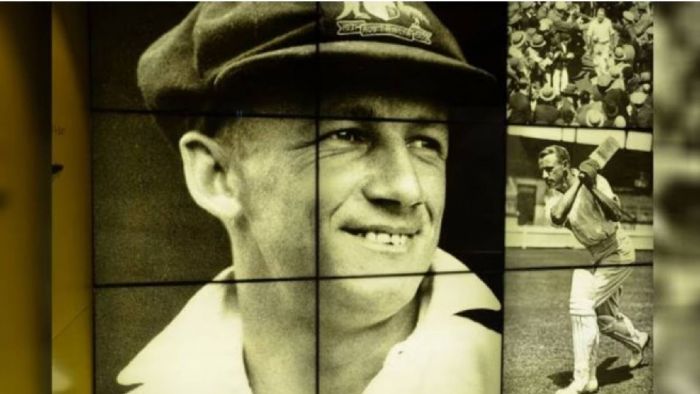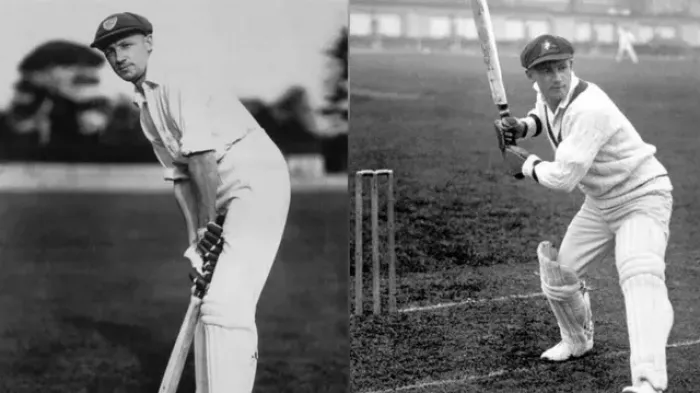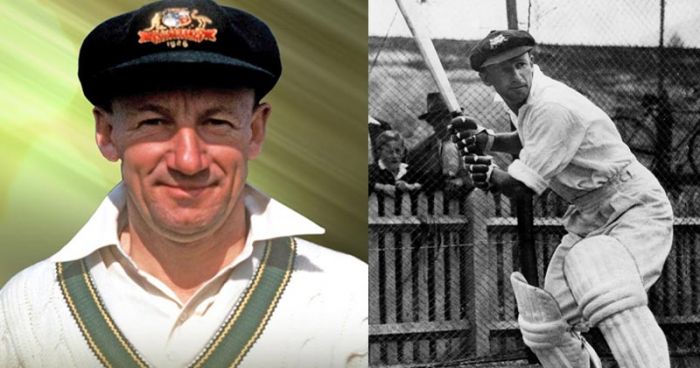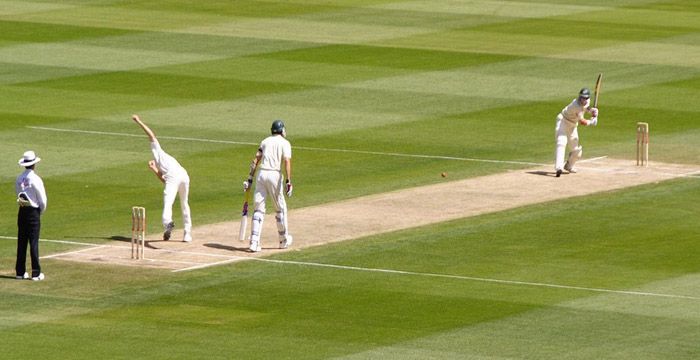Discover the unbelievable story of Sir Donald Bradman scoring 100 runs in just 3 overs. Learn how it happened, why it remains unmatched, and how it compares to the fastest centuries in cricket history.
Bradman’s Legendary Century in Just 3 Overs – Fact or Folklore?
Sir Donald Bradman is universally regarded as the greatest batsman in cricket history. Among his many achievements, one stands out as a near-mythical performance: scoring 100 runs in just 3 overs.
While this wasn’t a Test or first-class match, Bradman’s performance in a 1931 charity game at Blackheath Oval continues to spark debate, admiration, and awe.

The Day Bradman Scored 100 in 3 Overs
Match Overview
- Date: 2 November 1931
- Location: Blackheath Oval, New South Wales, Australia
- Teams: Blackheath XI vs Lithgow District XI
- Occasion: Fundraiser to inaugurate a new concrete pitch
- Match Type: Exhibition / non-first-class game
This match was organized as a social event in the Blue Mountains region. The local cricket association invited Bradman, who was already a national icon, to participate and draw a crowd. His innings turned into an unforgettable display of dominance.

Why the Century Was Possible in Just 3 Overs
At the time, Australian domestic matches used 8-ball overs. That meant Bradman had 24 balls, not 18, to reach his 100. He faced 22 deliveries, hitting 100 with relentless fours and sixes while his partner rotated the strike.
Just as Totally Science’s safe unblocked games exist outside mainstream gaming platforms but still engage millions of students, Bradman’s innings sits outside official cricket but remains unforgettable for fans.
Breakdown of the Overs:
| Over Number | Bowler | Runs Scored by Bradman | Partner’s Contribution |
| 1st | Horrie Baker | 33 | 1 single |
| 2nd | Horrie Baker | 40 | 0 runs |
| 3rd | A. C. Whitfield | 27 | 1 single |
| Total | — | 100 in 24 balls | 2 singles |
Bradman continued batting after the 100, ultimately retiring on 256 runs, which included 29 fours and 14 sixes. The match was not officially recorded by cricket boards, but it was widely reported in newspapers and later recalled by cricket historians.
Did Bradman Score 100 in 22 Balls?
Yes. According to multiple historical records, Bradman faced 22 of the 24 balls across the three overs. That equates to 100 runs in 22 balls, making it the fastest known century in terms of balls faced, albeit in an unofficial match.
Even today, this would surpass all known professional records. However, because it occurred in a non-first-class setting, the International Cricket Council (ICC) does not officially recognize it.
Bradman's Batting Career: Centuries and Records
Despite playing only 52 Test matches, Bradman set records that remain untouched even after decades of professional cricket.
Why It Isn’t Officially Recognized
Because the match was an exhibition, the International Cricket Council (ICC) never recognized the record. Cricket’s officialdom has always set strict boundaries on what counts as a record. As Forbes notes, governance and recognition shape the sport globally—from Olympic qualifying formats to funding. Bradman’s 3-over hundred, while spectacular, lives only in history books and memory.
Test Career Summary
| Statistic | Value |
| Matches Played | 52 |
| Test Centuries | 29 |
| Test Average | 99.94 |
| Double Centuries | 12 |
| Triple Centuries | 2 |
| Highest Test Score | 334 |
| Test Debut | 1928 vs England |
| Last Test | 1948 vs England |
First-Class Career Summary
| Statistic | Value |
| Matches Played | 234 |
| Centuries Scored | 117 |
| Highest Score | 452 not out |
| Career Span | 1927–1949 |
His score of 452 not out came in a first-class match for New South Wales against Queensland in 1930. This remained the highest individual score in first-class cricket until Brian Lara’s 501* in 1994.
How Bradman’s Century Compares to Fast Centuries Today
To place Bradman’s feat in a modern context, here’s a comparison with the fastest hundreds in recognized professional matches:
| Player | Balls Taken | Format | Opposition | Year |
| Don Bradman | 22 (unofficial) | Exhibition (8-ball overs) | Lithgow XI (Non-official) | 1931 |
| Chris Gayle | 30 | T20 (IPL) | Pune Warriors | 2013 |
| David Miller | 35 | T20I | Bangladesh | 2017 |
| Rohit Sharma | 35 | T20I | Sri Lanka | 2017 |
| AB de Villiers | 31 | ODI | West Indies | 2015 |
| Corey Anderson | 36 | ODI | West Indies | 2014 |
Bradman’s 22-ball century remains unmatched, even in unofficial games, despite the advent of power-hitting and T20 innovations.
The difference is context: Bradman achieved his century in an era of concrete pitches, heavier bats, and no boundary ropes. Modern cricket, with its bigger bats, smaller boundaries, and powerplays, still hasn’t seen anything close.
And the sport itself has grown dramatically. According to Statista’s global cricket reports, cricket now attracts hundreds of millions of viewers worldwide, especially through shorter formats like T20 and T10. Bradman’s folklore innings, if it had happened in today’s IPL or T20 World Cup, would have broken the internet.
Eyewitness Accounts and Newspaper Reports
Even though Bradman’s 3-over century wasn’t in an official match, people who saw it never forgot it.
- Wendell Bill, Bradman’s batting partner, later said:
- “I just gave him a single and watched the magic. He hit almost every ball for four or six.”
- Horrie Baker, the bowler who gave away 73 runs in two overs, admitted:
- “I wasn’t bowling badly—he was just unstoppable.”
- A local newspaper, the Lithgow Mercury, wrote the next day:
- “The crowd came for fun but saw something unforgettable. Bradman’s hitting was pure genius.”
- A.C. Whitfield, another bowler, recalled:
- “We couldn’t stop him. He always hit where no fielder was.”
These stories helped keep Bradman’s amazing 100 in 3 overs alive, even without official records or video clips.

Pitch and Game Conditions in 1931
Understanding Bradman’s feat requires a sense of the era:
- Pitches: Mostly uncovered, dusty, and unpredictable.
- Equipment: Players used heavy, natural willow bats and minimal protective gear.
- Fielding: No fielding restrictions, no boundary ropes (usually fences or natural landmarks).
- Bowling Attacks: In local or exhibition matches, the quality of bowling varied drastically.
Despite these differences, Bradman's ability to dominate regardless of conditions demonstrates his exceptional vision, footwork, and shot selection.
When Did Don Bradman Pass Away?
Sir Donald Bradman passed away on 25 February 2001 in Adelaide, South Australia, at the age of 92. He had retired from professional cricket in 1948 and was knighted in 1949, becoming the only Australian cricketer to receive that honour while still playing.
Did Anyone Score a Century in 3 Overs in T20?
No professional or international player has ever scored a century within 3 overs in T20 cricket.
The closest example would be Chris Gayle's 100 off 30 balls in an IPL match in 2013. While T20 has seen rapid scoring, 100 runs in 18 legal balls (3 overs of 6 balls each) has never been achieved.
It is worth noting that in T10 leagues and amateur cricket, some quick hundreds have been claimed unofficially, but none have been verified or accepted as records.
Century That Transcends Time
Don Bradman's century in three overs remains one of the most astonishing stories in cricket. While unofficial, it reflects the unmatched skill and aura of a player who rewrote the limits of batting.
Modern cricket may have bigger sixes, better bats, and fast-paced formats, but Bradman’s consistency, footwork, and dominance remain unparalleled. His ability to read the game, manipulate bowlers, and score at will makes his legacy timeless.
In an era without video highlights, this 3-over century still echoes across generations through stories, records, and the mystique of cricket’s greatest legend.
Bradman's Legacy
Sir Donald Bradman's influence on cricket transcends his extraordinary statistics. With a Test batting average of 99.94, he is widely regarded as the greatest batsman in the history of the sport. His technique, concentration, and consistency set new standards, inspiring generations of cricketers worldwide. Bradman's contributions helped elevate cricket's popularity, particularly in Australia, where he became a national hero.
Comparison Table: Fastest Centuries in Cricket

| Player | Balls Taken | Match Type | Year | Opposition |
|---|---|---|---|---|
| Don Bradman | 22* | Exhibition | 1931 | Lithgow District XI |
| Chris Gayle | 30 | T20 (IPL) | 2013 | Pune Warriors India |
| AB de Villiers | 31 | ODI | 2015 | West Indies |
| David Miller | 35 | T20I | 2017 | Bangladesh |
| Corey Anderson | 36 | ODI | 2014 | West Indies |
| Shahid Afridi | 37 | ODI | 1996 | Sri Lanka |
*Bradman's 22-ball century occurred in an era of 8-ball overs.
Bradman’s Legacy Beyond Records
Bradman passed away on 25 February 2001 in Adelaide, aged 92. Knighted in 1949 while still an active player, his Test average of 99.94 remains cricket’s greatest statistical achievement.
His 3-over century might be unofficial, but it captures everything that made him special — unmatched skill, adaptability, and dominance.
Did You Know?
Bradman's 3-over century is so legendary that it's often cited as one of the greatest feats in cricket folklore, even though it's not officially recognized by the ICC. The bat he used during this innings is displayed at the International Cricket Hall of Fame in Bowral, Australia.
Frequently Asked Questions
1. Was Don Bradman’s 100 in 3 overs ever officially recognized?
No, Bradman’s 100 in 3 overs was scored during an exhibition match in 1931 and is not officially recognized by the International Cricket Council (ICC) or any other cricket governing body.
2. How many balls did Bradman face to score his 100?
Bradman faced 22 of the 24 balls bowled across the three overs, scoring 100 runs in those 22 balls.
3. Who were the bowlers during Bradman’s 100 in 3 overs?
The bowlers were Horrie Baker and A.C. Whitfield. Baker bowled the first and second overs, while Whitfield bowled the third.
4. What were the conditions like during the match?
The match was played on a concrete pitch, which was a novelty at the time. The game was organized as a fundraiser to inaugurate this new type of pitch.
5. Did Bradman continue batting after scoring 100?
Yes, Bradman continued his innings after reaching 100, eventually retiring on 256 runs.
6. Has any professional cricketer scored a century in 3 overs?
No, no professional or international player has ever scored a century within 3 overs in official cricket matches.
Post Comment
Recent Comments
Olivia Roberts
Jun 26, 2025I came across this article while researching cricket records, and it provided a fascinating glimpse into one of the sport's most remarkable feats. The story of Sir Donald Bradman's century in just three overs is both intriguing and inspiring. The article does an excellent job of detailing the context and significance of this achievement, making it accessible even to readers unfamiliar with cricket. It's a must-read for anyone interested in the history of the game






Ethan Harris
Jun 26, 2025As a casual cricket fan, I found this article to be both informative and engaging. The narrative around Bradman's 1931 innings is captivating, and the article does a great job of breaking down the details in an easy-to-understand manner. I particularly appreciated the historical context provided, which helped me appreciate the significance of the record.